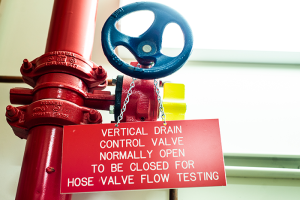Capital planning based on risk
A risk assessment not only allows for the creation of an alternative equipment maintenance program, but it also helps facilities managers prioritize capital equipment replacement planning.
Health care organizations rely on facilities managers to provide a comprehensive plan that allows for the efficient allocation of resources to maintain the operation of buildings and systems. A key component in the process is evaluating risk during the development of a successful capital plan.
For example, a risk assessment can be helpful in comparing two seemingly identical air-handling units (AHUs) that are nearing replacement. One is 30 years old and the other is 25 years old. Both have been maintained according to manufacturer’s recommendations. Which should be replaced first? With no other information available, age would suggest replacing the 30-year-old unit would be the best use of available capital resources. However, with a risk assessment, it is discovered that the 25-year-old unit serves the operating room (OR) suite and the other serves an administrative area. A defined risk scoring method shows that the AHU serving the OR suite would score considerably higher in the risk scale and would cause it to become a priority over the AHU serving the administrative area.
Additionally, data from the computerized maintenance management system (CMMS) should be included in the asset’s risk score. From the CMMS, one can learn that the 25-year-old AHU serving the OR suite has not only been maintained per manufacturer’s recommendations, but also had the coil replaced within the past five years. With that information, the asset may be able to be replaced later, making way for more critical assets to be replaced instead.
Much of what drives the day-to-day operational decisions in health care is based upon risk to the patients, employees and the occupants of a building. A capital planning effort that does not account for risk would essentially undermine an organization’s ability to factor all potential costs into the equation.





